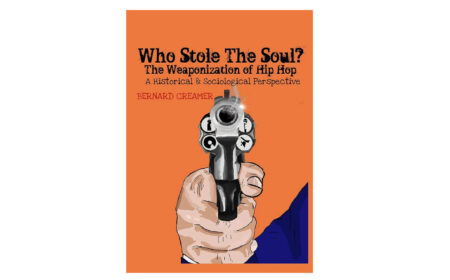Hair products that for years have been targeted at the African American community may be causing health problems for its customers.
Researchers at the Silent Spring Institute, working with epidemiologist Tamarra James-Todd at the Harvard T.H. Chan School of Public Health, measured the concentrations of chemicals in 18 of these products. What they found was that each product contained four to 30 types of chemicals.
Many of the products contained fragrances with phthalates, which have been linked to obesity and increased risk of diabetes, cardiovascular disease, pre-term birth, preeclampsia and gestational diabetes, says James-Todd.
James-Todd says that after Native Americans, black women have the highest prevalence of diabetes in the US. She says they also have the highest proportion of pre-term births and are more likely to be overweight or obese.
“When you’re thinking about a lot of these metabolic or reproductive health outcomes, it’s really important to consider why that might be occurring and not simply attribute it to, ‘Oh, there must be some inherent underlying genetic differences,’” she says.
James-Todd, who is African American, says women in the black community have for decades felt social and cultural pressures “regarding what is seen as beautiful, with straight long hair being kind of the stamp of beauty,” especially in Western culture.
“And so, people will do different things to try to adhere to that standard of beauty,” she says.
What the majority of the public does not know, she says, is that currently there are no laws that require personal care product companies to disclose all of the substances that are going into their products, due to trademark agreements. There is movement in the US Senate to enact the Personal Care Product and Safety Act, which would develop a protocol by which products are tested before being placed on store shelves.
“We’re completely relying on the companies to test for the safety of our products,” James-Todd says. “That seems like a conflict of interest. The company is trying to make a profit … [even though] the average consumer thinks that if it’s on the shelf, it’s safe.”
Seeing the connections
James-Todd became interested in the topic of what chemicals go into hair products while a master’s student at Boston University. She read about a study that compared a magazine advertisement for an anti-aging cream in Ladies’ Home Journal, a publication targeting white women, versus an ad for a placenta-based product — sheep placenta has become a mainstay ingredient in lots of leave-in conditioners — in Essence magazine, which targets black women.
“I’d walk into a black hair supply or hair care store, and see placenta and just wonder, what exactly is that for? Why are people using that?” she says. “Around that same time, an issue of Time magazine had come out, querying why were girls starting their periods earlier and earlier. And somehow that just kind of clicked for me.”
Shortly thereafter, there was a large study done that reported that 60 percent of black girls had reached their period by age 12, compared to about half of that for white girls.
“As a master’s student, that piqued my interest,” James-Todd says.
When she was working on his doctoral degree at Columbia University, James-Todd led a study around hair products being used in the greater New York metro area. The results backed up her theory: More girls were using hair oils for a longer period of time and those girls were much more likely to have their period earlier, which can significantly increase the likelihood of breast cancer.
Another study that served as inspiration, James-Todd says, was one in which four African American girls, ranging from four months to four years of age, showed they had all been developing breast and pubic hair — all of whom had mothers who were using hair oils and different types of products on them. An independent laboratory test confirmed that there were three types of estrogen found within the collection of products being used.
James-Todd says it is now known that about 50 percent of the products marketed to black women contain these controversial chemicals, compared to only about seven percent of products targeted to white women.
When James-Todd was conducting the hair products study in New York, several men would approach her and ask if they could take part as well. At the time, she was focused on breast cancer relating to women.
“It was kind of an ‘aha’ moment and so the reality is that black men are using these products, too,” she says. “Oftentimes, they wear shorter hairstyles and so if you think about it, the application of some of these products is that much more close to the scalp and absorbed through the scalp, and could have some similar health implications for diseases that are linked to some of these endocrine-disrupting chemicals.”
James-Todd has let her own natural hair be as curly as it wants to be ever since she was a girl growing up in Tennessee and saw her hair fall out after having a perm. She remembers, though, being an undergraduate student at Vanderbilt University and getting judgmental looks from fellow black women for choosing to not straighten her hair. Many thought she was from a different country.
“If I was American, I would not wear my hair this way,” she says of their collective thoughts. “And it’s been beautiful to see people embracing their hair. I am fragrance-free. I’ve been using the same product now for the past 30-plus years. Thank goodness it’s still on the market.”
James-Todd also uses the same product on her young daughter. She is a proponent of minimizing the amount of hair products one uses.
“As far as advocating for other women, I understand that some people don’t feel as comfortable doing that, or they think that it’ll affect their job or other issues,” she says. “But I think as society changes its standards of beauty, it’s been nice to see that being embraced.”
READ MORE AT: https://www.pri.org/stories/2018-06-18/study-shows-hair-care-products-targeted-black-community-contain-harmful-chemicals





